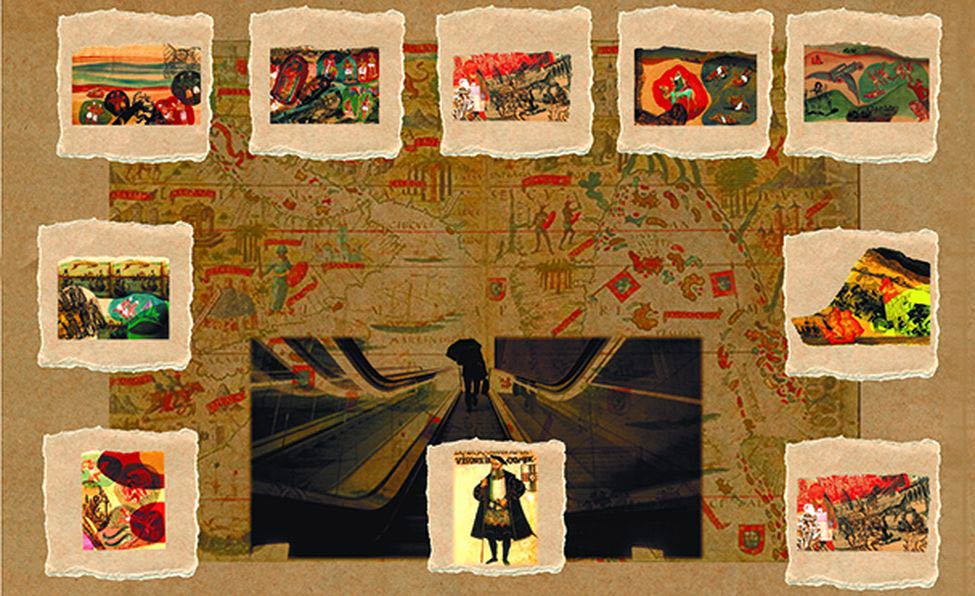The Surat-Mumbai bus had reached Borivali when it was engulfed in plumes of smoke. Even as the driver jumped out to see what was wrong, leaving 40-odd sleeping passengers behind, the battery compartment in the front exploded. A rush ensued for water and sand to douse the flames. The journey was interrupted briefly, but thanks to the alert driver, lives were saved. The passengers soon went back to their beds.
Yes, beds! Because many long-distance buses in India have redefined comfort, and now have beds, each with its own small sliding door. When a passenger slides the door shut, it looks almost like a coffin. I shuddered thinking what might have happened if the fire was not contained quickly. Such are the perils of travelling in India, even in the 21st century. But, travel is also the best way of knowing the country, making sense of its myriad features.
Travelling in India has always been a challenge for foreign chroniclers. Ibn Battuta had to watch out for the eccentric Mohammed bin Tughlaq; Niccolao Manucci had to worry about the wrath of the Mughals; Ralph Fitch was tormented by the Portuguese; Mark Tully was expelled during the Emergency; and Frank Kingdon-Ward was bullied by American soldiers when he came to explore northeast India in the 1940s. Yet, as Tully said, “India is unique with its myriad culture and, therefore, its mystery and appeal is everlasting to the foreign travellers.”
THE WEEK visited different destinations in India that were immortalised by travellers through their diaries and dispatches, to discover how those places fare today. As we criss-crossed the country, it became clear that nothing can beat travel in reliving the spirit of India.
Travelling across India in the run-up to the general elections next year reminded us that travel writers also wrote extensively on the politics of the country. Greek traveller Megasthenes was so overwhelmed by Palimbothra [Pataliputra] that although he was the ambassador of the Greek ruler Seleucus Nicator to the court of the Mauryas, he ended up immortalising India and the rulers of Pataliputra in his travelogue Indica. Despite the gap of thousands of years between them, writers as diverse as Xuanzang, Megasthenes, Rudyard Kipling and Tully were enamoured by the political power of India and wrote extensively about its ruling class.
Indira Gandhi, for instance, was a favourite of writers like Tully, Bruce Chatwin and Dominique Lapierre. In 1978, while travelling with Indira, a piece of rock landed on Chatwin’s face, leaving him with a bloody nose. “That’s what comes from following me around,” she said. The comment was typical of the easy trust that India’s political class often reposed on foreign travellers. But the travellers were, perhaps, cleverer.
Ibn Battuta, who regaled the world with his flamboyant descriptions of the sultanate-era Delhi, appears to have made a considerable fortune with his sycophantic presence in the court of Tughlaq. However, once back in his native Morocco, he did not spare his former patron and wrote in detail about the brutalities committed by the eccentric sultan.
All through the trip, we were reminded constantly about the 2014 elections by what we saw. From Kerala to Kashmir and from Gujarat to Arunachal Pradesh, posters of Narendra Modi and Rahul Gandhi could be seen jostling for space, at once uniting the country and yet exposing its faultlines. Even after 66 years of Independence, caste and communal conflicts continue to trouble the country. The wounds of Muzaffarnagar are still raw. Yet, the idea of India offers hope and succour to its people.
While in Meerut, as we sat in the Jama Masjid, which provides a spectacular view of the city with thousands of kites flying from its rooftops, we met a paan-chewing man, who spoke a mix of Burmese and Bengali. He was a Rohingya Muslim who fled Myanmar following communal clashes there, finally finding refuge in Meerut, just like thousands of persecuted men from across the world found a home in this country.
India may have changed, but its spirit stays the same. And, like a grand time machine, it can show in a flash, its timeless spirit.





